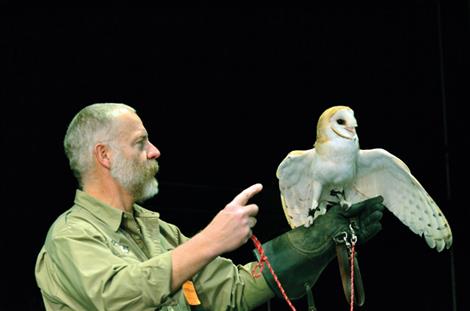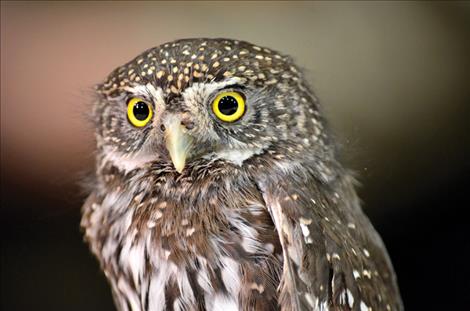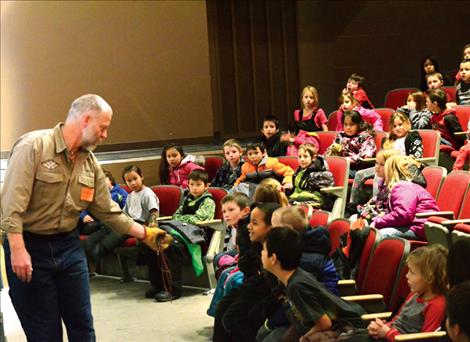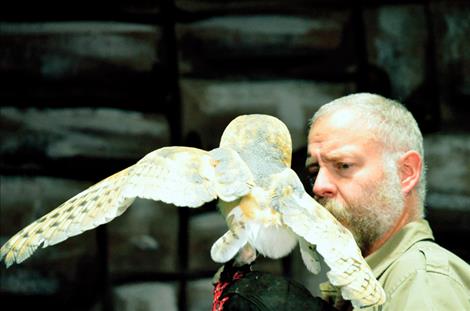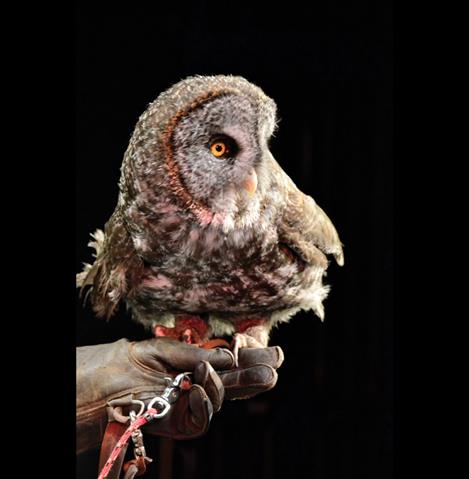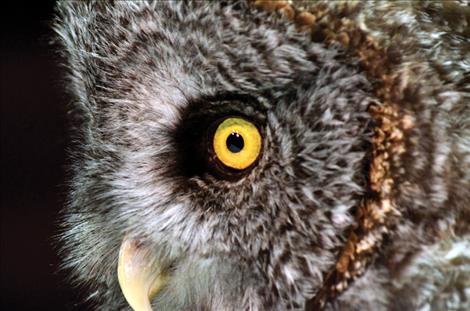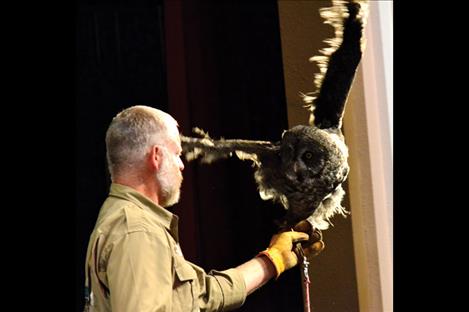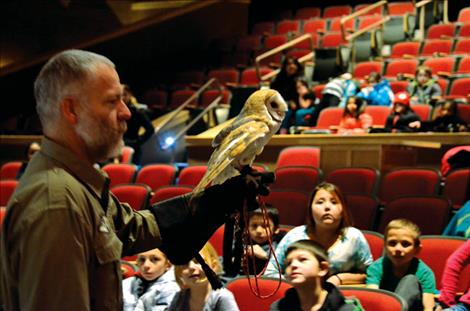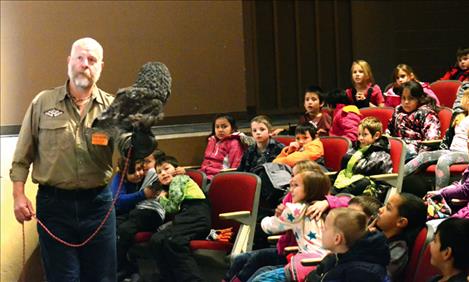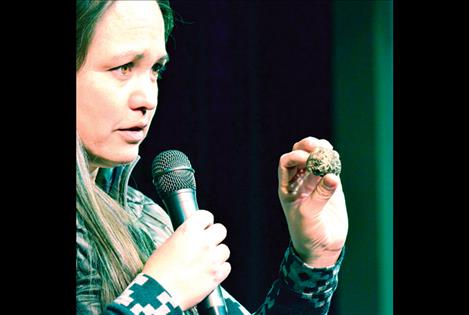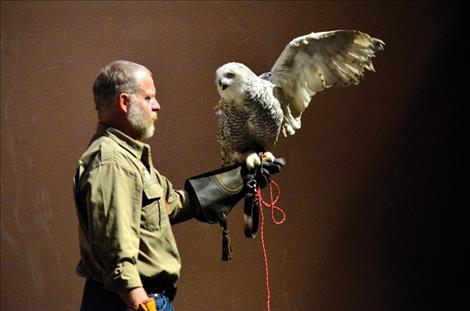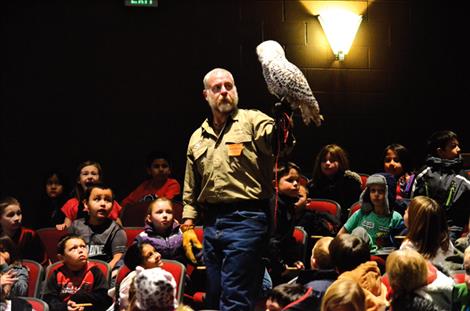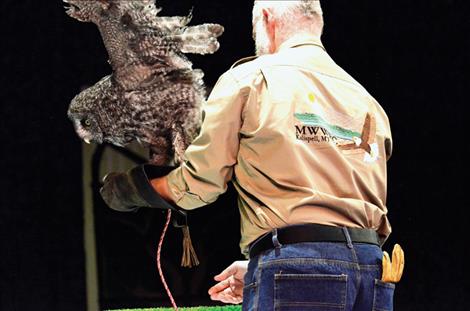Students see wildlife up close
Hey savvy news reader! Thanks for choosing local.
You are now reading
1 of 3 free articles.
It was a wild afternoon for K. William Harvey Elementary School students on Tuesday as they watched four real live owls spread their wings in the Performing Arts Center.
Confederated Salish and Kootenai Tribal Wildlife Biologist Steph Gillin partnered with Wild Wings Recovery Center in Kalispell to share the educational program with the students.
“These are educational birds,” she said. “We wanted to educate the kids on the owls in this area.”
She explained that in Native American culture, owls are considered messenger birds, and many believe those messages to be negative. But she said that wasn’t always true.
“The message isn’t always bad,” she said to the elementary students. “I was taught not to answer them. And I wanted to show you how beautiful they are.”
Byron Crow, a senior raptor specialist for the Montana Wild Wings Recovery Center, brought the owls to the school in large black boxes. The birds all had problems with their wings after being hit by cars.
“Our primary goal is recovery and release,” he said before the demonstration. “If they can’t be released because of injury, we see how they are for education so that people can see what is actually sitting on their fence.”
The birds have to have a certain temperament to be part of the educational program.
“We don’t really train them,” he said. “It’s a cooperation. We provide them with food and safety and they exhibit a behavior for that.”
A Northern pygmy owl named Frank was the first owl introduced to the students. He perched on a leather glove covering Crow’s hand. A leash above his talon kept him secure as Crow walked around the seated children so they could get a close-up look. The students were asked to stay very quiet and not to touch the tiny owl.
Gillin explained to the students that Frank weighed about two to three ounces and stood about six inches tall, and his species is the smallest known to Montana. The ferocious little hunter sometimes eats pray that is a bit bigger than him.
Homer was the next owl to perch on Crow’s glove. He is a great gray owl, which is the longest owl. He can hear his prey under the snow and digs in to capture it. Homer was found east of Bigfork with a broken wing.
A snowy owl named Tika was the third owl to amaze the kids. She spread her wing as she perched on Crow’s glove. The other wing needed to be amputated after she was hit by a car.
As Igor was taken out of his box, he let out a loud screech that was enhanced with the acoustics in the center. He is a barn owl with a beige colored body and a white face. He continued to periodically screech for the delighted students.
Many of the students chose their favorite owl as they watched each one being carried around the center, and some just itched to touch their soft looking feathers but couldn’t, and others kept their distance. A few students wanted to know if the owls would make good pets, but fortunately for wild birds, they can’t become pets.
“It’s illegal to have wild animals as pets,” she said explaining that the owls at the presentation were not considered pets but licensed educational birds.
After the presentation, Luc Cheff, 8, said he read stories about barn owls before but he had never seen one.
“It has a really cool sound,” he said. “Its face was shaped cool.”
Delilah Mahkuk, 6, got ready to go back to her kindergarten classroom. She had a favorite owl.
“I liked the snowy one,” she said. “It was beautiful.”















